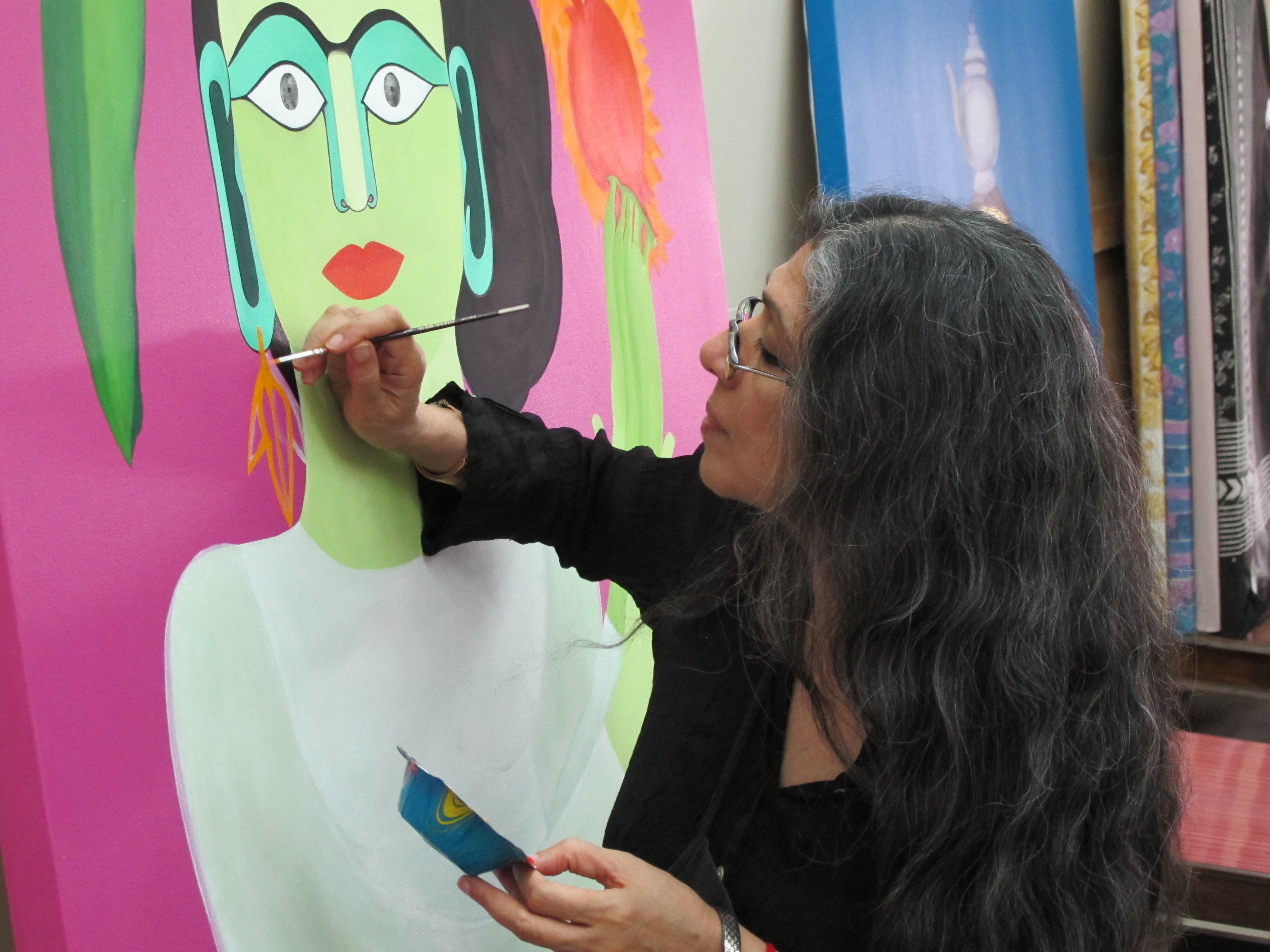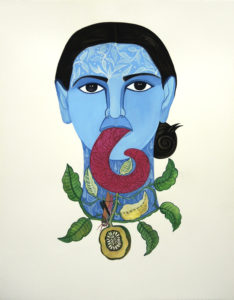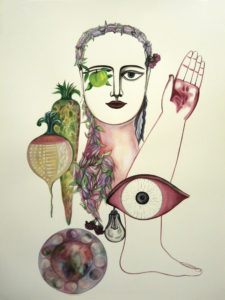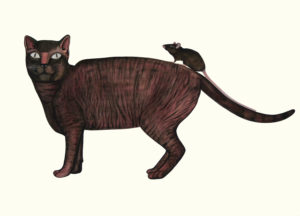I come from a strong lineage of empowered women: Rekha Rodwittiya

Saurabh Tankha
One of the pioneering artists of her generation, Rekha Rodwittiya will be opening her solo exhibition Rekha@Sixty – Transient Worlds of Belonging on October 31. The month-long exhibition at Sakshi Gallery, Mumbai, celebrates the legendary artist’s 60th birthday, through a new body of work that looks back on a spiritual and physical journey across six decades. Along with an impressive 60-piece series of paper works, the show will have a series of hitherto unseen multimedia works.
Excerpts from an interview with the Vadodara-based artist…
How does it feel to be 60?
The focus of my life still remains engaged with those preoccupations I chose to define my existence by when I was 18. Age offers, perhaps, the mediation of experience that helps in steadying that necessary plumb line with which to keep all things in better balance. However, when you have lived your life with more years than remain ahead, you recognise that human frailties remain in perpetuity, feeding cycles of violence and war as a continuum that is never ending. So it requires great determination to insist of oneself to believe in the hope of a betterment for the future – a time you will not partake of, but which still demands your intervention nonetheless.
How do you see your life at 60?
I recognise the privilege to have charted a journey that holds an empowered position and most importantly, that my voice as a feminist inscribes my identity.
Your earliest memory of expressing yourself through art…
I think art is one of the early forms of articulation most children from environments of economic stability, express themselves through. In my case there were two circumstantial factors which perhaps made drawing an important tool for me – one was that I was home schooled due to ill health till I was seven and the second was that my father was a fighter pilot in the Air Force. Air bases (during my childhood) were normally isolated and away from the city where I was without children of my own age to with whom to interact. As a result, I spent hours drawing – not painting – but drawing. Meticulous drawings, neatly arranged from one page to the next. These stacks of notebooks were not put out for display by me for others to see but were in fact matter-of-fact spaces of contemplation and reprieve.
What was the reaction back home when you told everyone that you wanted to be an artist?
I knew I wanted to be a painter from the age of five. My parents were extremely educated and liberal-minded and epitomised the Nehruvian ideals of a modern Indian nuclear family, where the values of education and freedom were considered to be ones true wealth. There was an already existing tradition of cultural practices within the family that embraced the arts. My grandaunt Philomena Thumboochetty, a renowned violinist of her time, went to Paris in 1929 at the age of 16 to enroll at the Paris Conservatoire. So in many ways I come from a strong lineage of empowered women, and learnt lessons of confidence as a young child to make choices that would hold my liberty and know myself, perhaps most importantly, without apology or excuse.
Which medium is closest to you and why?
I have a great love for drawing and water colour. I delight in what a contour can deliver – from a wandering tight line the corporality of a form can come alive. As the pressure of the hand may increase, the heaviness of a line can hold the captured mystery of the tryst of two lovers – all this and much more spills out from the sharpened point of an ordinary graphite pencil. Water colours, on the other hand, hold something exquisitely magical in the manner in which their yield to the pressure of a brush. In water colour, you have very little scope for error, as erasing isn’t a viable possibility. I enjoy this insistence of focus that it demands.
Was there an artist or style/movement that inspired you in your early day as an artist?
My formative years at college were within the on-going debates and discourses of the 70s which were examining pictorial language structures and theoretical enquires of modernity. It was the gateway through which I determined my personal journey as an artist. I grew up looking at world art history and cultural practices as spaces within which to forage and discover. My feminist concerns were the axis of personal rooting at all times.
How do you feel about the increasing number of art fairs and festivals? In your opinion, do these contribute to helping artists reach out to a broader audience?
I love the fact that people from all walks of life come to see art fairs today in India. I love the hustle-bustle of these events where glitz and grunge collide, and desire becomes the currency of dreams. These events make art more visible and more celebratory. They also encourage a more democratised arena of viewing as these events are normally a ticketed entry – therefore making each viewer hold a significance of participation within the event. For me, this is of great value and very precious.
What is Rekha Rodwittiya doing when she is not painting?
I am a workaholic…. I do all things within my life with attention to detail and with applied efficiency just so that I can be in my studio and paint. However, I also run The Collective Studio Baroda within our residential premises and have had, for many years, young artists within the teaching and residency programmes it offers.
A piece of advice for young artists…
Be disciplined and ethical in all that you do.





